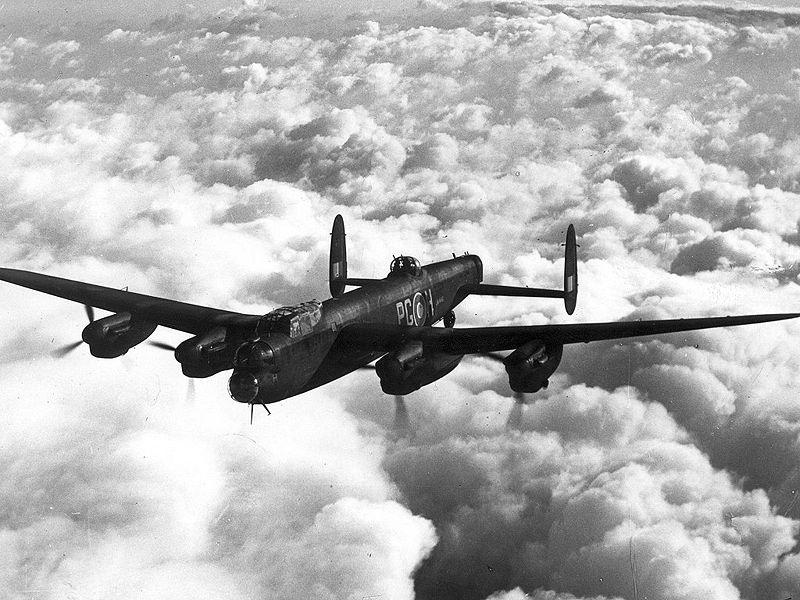Aircraft Identified as from No. 619 Squadon - Avro Lancaster
Shortly after the Second World War began, the Royal Air Force (RAF) launched small-scale bombing raids on Germany as per pre-war doctrine. For several reasons these raids failed to redirect the German war effort; including because of inadequate technological means for producing effective outcomes, a lack of resources and the trial and error inherent in warfare. Despite the pre-war effort devoted to building up the RAF's Bomber Command, with the RAF absorbing 40% of British defense expenditures in 1938, Bomber Command began the Second World War with only a few hundred bombers - mostly Wellingtons, Whitleys, Hampdens, and Blenheims. The British doggedly carried on however, continually developing Bomber Command in spite of facing tremendous technical and doctrinal challenges. One truth quickly became obvious in the War's first year. In both the 1939-1940 era skies over Germany and over England unescorted bombers during the day proved overwhelmingly vulnerable to prowling fighter aircraft. The British, and the Germans thus turned to nighttime bombing. In spite of the greatly reduced targeting accuracy achieved during nighttime operations aircrew and aircraft survivability was greatly enhanced, therefore allowing the RAF to slowly build up Bomber Command's ranks.
During the early war years and as the RAF's doctrine, tactics and organization evolved so did British bomber designs. By 1942 new Lancaster bombers, primarily manufactured by Avro, slowly replaced Bomber Command's older aircraft. Although Britain fielded three different four-engine bombers, the Handley Page Halifax, Short Stirling and Avro Lancaster, the Lancaster emerged as the best four-engine bomber in the war over Europe. The 10,000-pound bomb load carried by the Lancaster out to a 1,040-mile combat radius dwarfed the typical USAAF B-17s 5,000 lb. bomb load to an 800-mile combat radius. In part this was because of the formidable defensive firepower carried by the B-17, as it flew in daylight per USAAF doctrine, and in turning the B-17 into a veritable flying battleship the USAAF sacrificed payload and range. In comparison the mostly nocturnal Lancaster, though still carrying a strong defensive armament of its own, did not match the B-17s defensive armament and could thus pack its massive bomb bay with a superior bomb load. That said, the Lancaster's greater payload was also indicative of an enormous design and testing effort that had brought this capable aircraft into service.
The Lancaster made its mark bombing area targets such as Axis cities and large industrial works but the Lancaster proved to be a versatile aircraft and when customized was capable of accurately hitting and destroying physically smaller high value targets. For instance, Bomber Command aircrews delivered the most spectacular allied success to date in the war on the night of May 16, 1943; when a specially trained elite squadron flying Lancaster bombers conducted the now famous "Dam Buster" raid against the huge dams responsible for the industrial and residential supply of water in Germany's industrial Ruhr Valley heartland. Although the Germans quickly repaired the dams, restoring full production within six weeks, the fact Bomber Command destroyed a specific target precisely at night provided the British with a huge psychological boost at a time in the war when it was not entirely clear Germany would be defeated. Throughout the war the Lancaster was an aircraft capable of meeting a wide range of combat roles. On November 12, 1944 British pilots flying specially modified Lancaster's carrying massive 12,000 pound "Tallboy" bombs finally sank the German battleship Tirpitz, sister ship of the Bismarck, where it had been sheltering in a fjord near Tromsø, Norway.
Picture Courtesy of Royal Air Force


